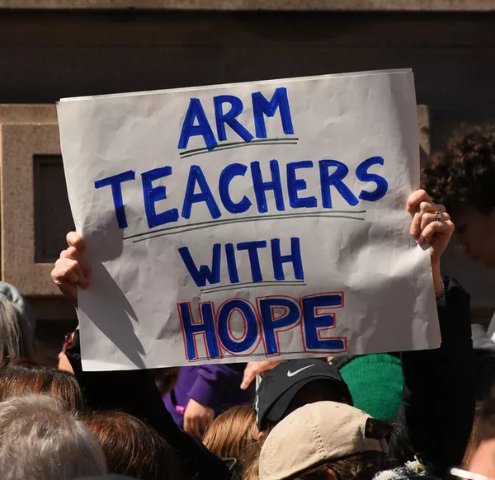Growing up, I’d always wanted to be a teacher. The dream began when I wanted to read stories aloud to my third grade class, but I realized that would be a bit condescending, so I agreed to patiently wait until I was an adult so I could discuss the books with students.
I was 5 when Eric Harris and Dylan Klebold went on a shooting spree in Columbine High School. By the time I understood the events of that day, Columbine was a piece of tragic history whose mention came with a somber shake of the head. In 2007, the shooting at Virginia Tech rattled the country but it, too, fell into the history books.
The frequency of school shootings seemed to accelerate as I moved through high school and then college. Mass shootings in particular became seemingly more random and hostile. I was working my part-time job in my freshman year of college when I received the news about Sandy Hook. I watched one of my coworkers, a teacher herself, break down in tears and still, I never swayed in my decision to become a teacher. I hadn’t realized it at that point, but school shootings had become an occupational hazard in the field of education. It seems rather cold to see it from that perspective, but that’s the reality of it.
In my third year of teaching high school, I received tactical training. I learned how to properly barricade the entrances, where to stand in a room if a shooter was at my door, what objects to grab and use if the shooter made it through, and how to choose the best fighters out of my students depending on the class. When I was in third grade, I’d dreamt of writing poetry and reading books with my students. I hadn’t imagined that I would also be learning how to “slice the pie” and weaponize my classroom supplies.
Since the horrific school shooting in Uvalde, there have been the usual calls for gun regulation, higher security, and increased funding for mental health care. The worst idea, by far, is to arm teachers.
It was unsurprising to hear Texas Gov. Greg Abbott and Attorney General Ken Paxton suggest arming teachers. The first time I’d heard this call to arms was one year after I graduated from college. My high schoolers and I were processing the shooting at Marjory Stoneman Douglas High School in Parkland. It was then that I fully realized that if a shooter entered our school, I would be expected to protect and die for my students. And I would have — but I didn’t want a gun in my classroom. I don’t want a gun, period.
In fact, outfitting the country’s educators would only exacerbate our gun problems. When I hear Wisconsin Republican lawmakers like Assembly Speaker Robin Vos and GOP gubernatorial candidate Kevin Nicholson welcome the concept of equipping teachers with firearms, I imagine those who were with me in my classrooms over the course of my short four-year stint in teaching: naive, emotionally unstable teenagers with underdeveloped frontal lobes. Even if locked in a desk drawer, having a gun in a classroom poses a clear risk. Kids are far smarter than we give them credit for, and they’re impulsive as hell.
Arming every teacher with live rounds is perhaps the most insensible, irresponsible and shortsighted solution to this issue. The police, who have been fully trained to shoot civilians only when their own lives are being threatened, still regularly fail to practice that restraint in the field. As much as I give teachers credit for loving their students, could all of the teachers in the country leave the guns in the drawers if a kid threatened them — which happens more than you might think?
Would we expect our elementary school educators to keep a gun around young children? Would there be regulations as to where the guns would be kept? What if a school can’t afford a safe for each classroom because they can’t even afford air conditioning or updated textbooks? Would a concealed carry permit be included with the teaching certification program? Would prospective teachers be denied certification if they refused to carry? Could schools turn potential employees away for refusing to carry? Would teachers be expected to attend target practice to stay sharp?
Why is this even being discussed?
In this country, we have a habit of treating the symptoms before the illness. The obtuse notion of arming the “good” to fight the “bad” oversimplifies the gun violence crisis; as we have seen it play out time and time again, the “good” make mistakes, even fatal ones. Adding more guns to the issue will not solve it.
Christy Klein is a graduate student in the School of Journalism and Mass Communications at UW-Madison, and Isthmus’ summer intern.


